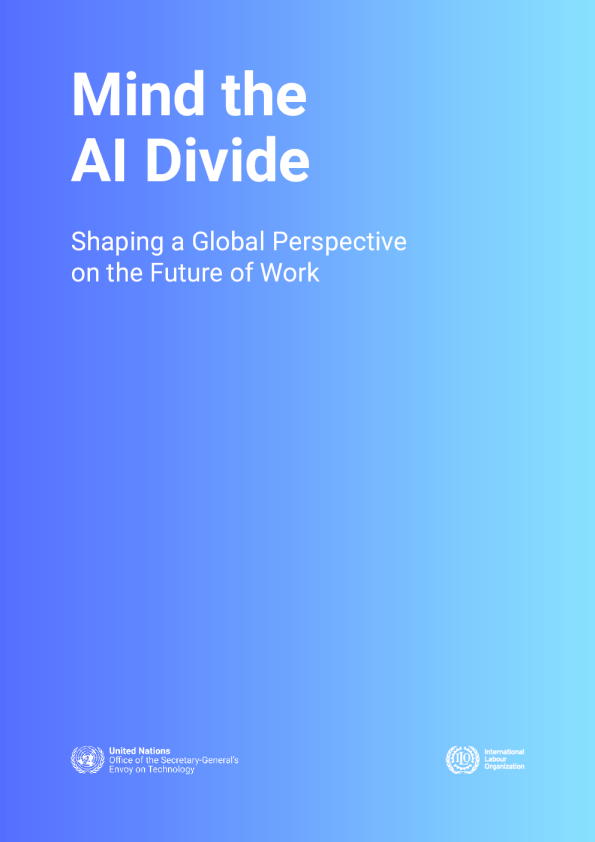人工智能与沉浸式环境的融合塑造数字现实的未来2024
 AI智能总结
AI智能总结
人工智能在沉浸式环境中的演进 从传统AI到生成式AI 人工智能在元宇宙中的进化已经发生了变革性的变化,从基于规则的系统发展到机器学习,现在到了生成式AI的阶段。这一旅程已经彻底改变了虚拟环境中的内容创作和交互。生成式AI,尤其是生成对抗网络(GANs),能够生成原创、逼真的内容,大大降低了生产复杂数字资产所需的时间和技能。自然语言处理技术的进步提升了对话交互,而人工智能驱动的平台现在能够生成动态、不断演变的虚拟世界。 人工智能(AI),尤其是生成式AI(GenAI),与元宇宙的整合正在革新数字环境并重新定义虚拟体验的界限。这种融合正在创造一种重大转变,即我们将如何与技术互动、开展业务以及与数字内容互动。随着这些技术的发展和结合,它们正在开辟大量的创新、创造力和社会进步的机会。 对于企业而言,这种融合既带来了机遇,也带来了挑战。由AI增强的沉浸式环境为顾客互动提供了新的渠道,创造了新颖的商业模式,以及前所未有的协作和价值创造方式。然而,这也要求重新构想传统策略,并愿意拥抱新兴技术。 这些发展使内容创作民主化,增强了虚拟世界的可扩展性和多样性。随着人工智能的持续进步,以及量子计算和神经形态工程可能做出的贡献,它承诺将进一步模糊物理和数字现实之间的界限,为虚拟空间中的互动和创造力开辟新的前沿。 元宇宙内容创作中的这一演变对内容创作的影响不容小觑。传统的创建3D资产、环境和角色的方法耗时且需要专业技能。生成式人工智能使这一过程民主化,允许快速创建多样化且复杂的数字资产。例如,NVIDIA的GauGAN工具可以将简单的草图转换为逼真的景观,这展示了生成式人工智能如何降低虚拟世界内容创作的门槛。 本观点探讨人工智能如何使元宇宙中的内容创作更加便捷,允许创造逼真的3D世界和角色。我们讨论了人工智能代理如何改善虚拟空间中的用户体验和交互。我们还探讨了增强现实的空间计算如何改变我们在物理环境中看待和使用数字信息的方式。此外,我们还提及了由此技术引发的问题,例如隐私、道德和安全。 人工智能与沉浸式环境的结合可以被视为一种文化和经济变革,它将重塑产业,重新定义社会互动,并为创造性和创新开辟新的途径。这种组合模糊了物理世界与数字世界之间的界限,创造了曾经被认为不可能的沉浸式体验。 当前沉浸式环境中的AI状态 这些人工智能驱动的化身不仅仅是静态的表现,而是变得越来越动态和响应。它们可以根据用户互动和学习偏好调整行为,相应地定制体验。这种个性化的程度提高了用户参与度,并创造了一个更具吸引力且更具沉浸感的体验。 当前人工智能的状态代表了多种尖端技术的融合,每种技术都为创建更加沉浸式、互动性和智能化的虚拟环境做出了贡献。这种集成正为用户参与、内容创造和商业创新开辟新的可能性。 在这个背景下,人工智能最直观的应用之一是在虚拟形象和虚拟助手领域。这些由AI驱动的实体充当用户与虚拟世界之间的接口,促进了更自然直观的交互。高级语言模型(LLM和基础模型)使这些虚拟形象能够参与复杂对话,理解上下文,甚至表达情感。像Soul Machines这样的公司正在推动这一领域的边界,创造出可以担任品牌大使、客户服务代表或虚拟伙伴的数字人类。 程序内容生成(PCG),由人工智能算法驱动,是另一个取得了重大进展的领域。这项技术允许创造庞大、多样化的虚拟环境,无需对每个元素进行人工设计。人工智能可以生成景观、建筑甚至整个城市,它们充满独特的细节,确保没有两个用户的体验是完全相同的。“无主之地”等游戏展示了这项技术的潜力,为玩家提供了一个本质上无限的宇宙去探索,其中行星和生态系统是由人工智能程序生成的。 过程性内容生成(Procedural content generation,PCG)是使用人工智能系统创作游戏方面的一种过程,这些方面通常由人类设计师负责创建,从纹理和自然效果到关卡和任务,甚至包括游戏规则本身。 语言模型的应用不仅限于虚拟形象交互。它们还被用于构建更友好的用户界面,使用户能够通过语音命令或自然语言查询来探索和参与虚拟环境。另一个日益增长的趋势是在虚拟环境中使用AI进行即时语言翻译。这项技术可以克服语言障碍,使得来自世界不同地区的用户能够在虚拟空间中顺畅地交流。 人工智能也被用于提升元宇宙平台的性能和效率。机器学习算法被用于优化网络流量,减少延迟,并改进渲染技术,确保即使在复杂的虚拟环境中,多用户也能获得流畅和响应迅速的体验。 人工智能生成内容创作 彻底革新3D资产创作 人工智能生成内容(AIGC)创作技术的到来,开启了3D资产开发的新时代,从根本上改变了虚拟世界构建的格局。这种内容创作方法正在重新定义数字资产在虚拟环境中被构思、设计和实施的本质。 生成,DALL-E背后的原理正被适应和扩展到3D资产创作,为在虚拟环境中快速生成多样化且细致的物体开启了新的可能性。 当前人工智能的状态还包括触觉反馈和感官体验的显著进步。人工智能算法正被用于在虚拟现实中创造更真实的触觉感受,增强临场感和沉浸感。像HaptX这样的公司正在开发能够模拟虚拟物体纹理、阻力和温度的手套,人工智能在其中发挥着至关重要的作用,用于解释和生成这些感受。 计算机视觉,作为另一项关键的人工智能技术,在增强现实和混合现实体验中扮演着至关重要的角色。人工智能驱动的计算机视觉算法能够实时分析和解释现实世界,使虚拟元素与我们的物理环境无缝融合。这项技术在诸如零售业中的虚拟试穿等应用中至关重要,用户可以在不实际穿着的情况下看到服装或配饰穿戴在身上的效果。 稳定扩散,另一种开创性的AI模型,在图像生成和处理方面展现出显著的能力。它理解并解释复杂提示的能力使其成为创造多样化和细腻的3D资产的无价工具。稳定扩散的开源特性导致了应用和扩展的激增,其中许多被专门调整用于元宇宙内容创作。 在此革命前沿的是一些复杂的AI工具,它们正在推动3D资产创作的可能性的界限。例如,OpenAI开发的DALL-E平台已经展示了从文本描述中生成复杂、逼真图像的非凡能力。虽然最初专注于2D图像 人工智能代理和生成式头像 NVIDIA的Magic3D代表了在人工智能驱动下的3D建模方面的一大飞跃。这款创新工具可以从文本描述中生成3D模型,显著减少创建复杂3D资产所需的时间和专业知识。这些人工智能工具对3D资产创建过程的影响是深远的。传统上,创建高质量的3D模型需要广泛的专业软件培训,可能需要几天甚至几周的时间来处理复杂资产。借助人工智能工具,这个过程可以缩短到数小时甚至几分钟。这种效率不仅节省了时间,还为虚拟世界设计中的快速原型制作和迭代打开了新的可能性。 虚拟环境中的多样性,随着更多的人可以分享他们的想法和愿景。这场革命也影响着整个景观、生态系统和城市景观的创造。AI工具可以在少量的人类输入下生成巨大且详细的虚拟世界。它们可以使用复杂的因素,如地形物理学、生态系统动力学和建筑风格,以创造逼真且沉浸式的环境。 人工智能在3D资产创作中的集成也使得虚拟环境更加动态和响应式。AI算法可以分析用户交互和偏好,实时生成个性化内容,为每位用户创造独特的体验。这种程度的高度定制和响应性对于创造引人入胜和沉浸式体验至关重要。 人工智能代理的作用 这些AI工具让3D内容创作更加易于访问。以前无法制作复杂3D资源的个人和小组现在可以加入元宇宙。这为创造力提供了更多的空间。 人工智能代理正成为一项关键技术,在塑造用户体验和促进虚拟环境中的交互方面发挥着关键作用。这些智能实体不仅仅是背景元素;它们正成为积极参与者,能够以越来越复杂的方式学习和适应用户行为,并做出反应。 在本质上看,AI代理被设计用来通过提供帮助、陪伴和交互元素来提升用户体验,使虚拟世界感觉更加生动和响应。AI代理的类型可以大相径庭,从简单的任务导向型机器人到复杂的、情感智能型虚拟生物。 内容创作的民主化,由人工智能技术的进步所推动,正在改变虚拟世界的构建和居住方式。具备用户友好界面的AI工具正在简化如3D建模和动画等复杂过程,使其对非技术人员变得易于访问。这些工具能够解析自然语言或粗略草图来创建完整的3D模型,降低内容创作的技术技能门槛。 并且自然语言编程工具正在赋权非程序员在虚拟世界中创建复杂、互动的元素。然而,这种民主化也带来了挑战,特别是在质量控制和文化内容审查方面。在这里,人工智能扮演着双重角色,既帮助内容创作,也协助内容审阅。 行为。他们可以从玩家互动中学习,发展独特的个性,甚至随着时间的推移与用户建立关系。 人工智能代理的主要功能之一是在虚拟环境中充当向导或助手。这些代理可以帮助用户导航复杂的虚拟空间,提供有关环境或正在进行的事件的信息,并根据用户的偏好和行为模式提供个性化建议。例如,在虚拟博物馆中,一个AI代理可以充当策展人,提供关于展品的详细信息,并量身定制参观路线以适应用户的兴趣。 AI代理在虚拟环境中的客户服务和支持领域拥有另一个显著的应用。随着企业开始在元宇宙中建立实体,AI代理可以充当一线代表,处理咨询,引导客户在虚拟商店购物,并提供个性化推荐。 展望未来,如同人脑-电脑界面这样的新兴技术以及与人工智能的结合将能够进一步拓宽创新可能性,也许将允许直接将思想转化为虚拟内容。因此,由人工智能驱动的内容创作民主化正在促进一个更加包容、多样和动态的元宇宙。随着这些技术的发展,我们可以预见虚拟空间中将爆发出由全球创作者群体驱动的创意和创新浪潮,这群创作者得到人工智能工具的赋能。 这种易用性正在培养一个更加多元和包容的元宇宙生态系统,允许更广泛的角度和文化影响得到体现。它模糊了专业创作者和业余创作者之间的界限,使业余爱好者能够制作高质量的内容并创造新的商业机会。 AI智能代理也被用于提高可及性。它们可以为有残疾的用户提供实时援助,例如为视障用户提供视觉元素的声音描述,为听力受损用户提供手语翻译。这种AI技术的应用对于使元宇宙更具包容性和对多元化的用户群体更易接入至关重要。 人工智能代理在增强社交互动中也发挥着至关重要的作用。它们可以充当对话伙伴、语言翻译者,甚至在虚拟会议中担任调解者。高级语言模型使这些代理能够参与细腻、情境感知的对话,使互动感觉更加自然和吸引人。这种能力在教育和培训场景中尤其有价值,因为人工智能代理可以充当导师或教练,提供个性化的指导和反馈。 该影响超出了静态资产,扩展到交互式体验和AI驱动角色。视觉脚本 人工智能代理的潜力延伸至创建更动态和演变的虚拟环境。在大型虚拟世界中,人工智能代理可用于模拟复杂的生态系统或社会。这些代理可以拥有自己的目标、决策过程和交互方式,创造出随时间演变的虚拟世界,即使没有直接的用户干预。这种能力对于模拟、社会实验和沉浸式叙事特别有趣。 工具如谷歌的Dream Canvas和NVIDIA的Canvas,它们能将简单的笔触转化为逼真的风景画,是AI辅助创造力这一趋势的例证。 在娱乐和游戏领域,人工智能代理正在革新非玩家角色(NPCs)。传统的NPCs通常遵循脚本化的行为,但由人工智能驱动的NPCs可以展现出更复杂、适应性更强的行为。 生成式虚拟形象的进展 语言处理与生成技术的融合,使得数字形象变得更加智能和反应灵敏。现在,数字形象可以参与情境适宜的对话,理解并回应情感暗示,甚至从互动中学习,随着时间的推移变得更加个性化。这种智能水平使得数字形象不仅作为静态的表现,还可以作为动态的代理,在特定场景中自主代表用户进行交互。 生成式虚拟形象领域代表了人工智能与元宇宙融合中最为激动人心且快速发展的一个领域。这些由人工智能驱动的数字形象正在推动个性化、现实感和交互性的边界,从根本上改变了用户如何在虚拟环境中表达自我和互动的方式。 在当前技术前沿的是高度真实感的人偶创作系统的发展。例如,Epic Games公司通过其MetaHuman Creator产品,利用深度学习和计算机视觉技术,以前所未有的细节程度生成逼真的现实人类人偶。这些系统可以通过结合照片、扫描和用户输入,从多种来源创建栩栩如生的数字人类,同时保持视觉的精确度,允许高度的定制化。




